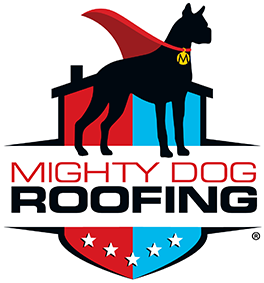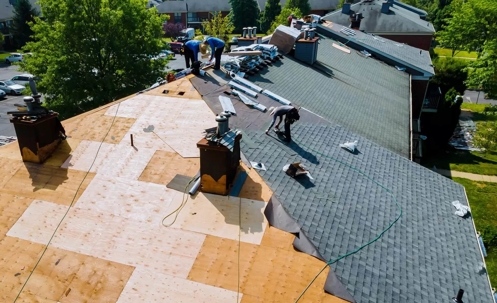What Are Starter Shingles in Roofing? Their Role Explained
Starter Shingles: Your Roof’s First Line of Defense
There are many components of a roof but one that is often overlooked can be considered an unsung hero of your roofing system. This unsung hero is starter shingles. Although they may not command as much attention as their more visible counterparts, starter shingles lay the foundation for a roof's performance and durability. Let’s learn more about the importance and role of starter shingles for your roof.
What Are Starter Shingles?
When it comes to roofing materials, the emphasis is always on the roof shingle as the main element of the roof. When you look at a roof, finished shingles are pretty much all you see, and it may seem that what’s underneath wouldn’t make that much of a difference.
On the contrary, every experienced roofer will assure you that it is the base roofing material that gives you that peace of mind you need if you want to prevent leaks and wind damage. Think of it as a clean slate for the roofing contractors to be able to properly lay down the first layer of shingles.
The base layer of starter shingles will allow the roofing experts to achieve a nice straight line when setting up the roof shingles. Without it, the final look may seem unfinished and even jagged in some cases.
Without the base layer of starter shingles, there would also be no barrier protecting the roof from potential leaks and storm damage. You don’t have to worry about shingle blow offs as long as starter shingles are installed up the rake edge. The shingles added on top will adhere to the starter shingles. A starter shingle usually has a tar strip on the bottom, which will ensure a watertight seal and prevent wind uplift.
Starter shingles usually come in a rectangular shape, so they can easily be combined with any type of overlapping roof shingles. The upper layer is covered with dark roofing granules, but you don’t have to worry about the design as these long strips will not be visible underneath the architectural shingles.
Where Do Roofers Install Starter Shingles?
The starter shingles are mostly positioned on ridges, eaves, and rakes of the roof deck. They aren’t always necessary at the rakes, since this area of the roof isn’t as susceptible to wind and blow offs. It is, however, recommended to cover all of these areas for maximum protection and stability.
Starter shingles are installed on the eaves mostly to conceal the joints between the finish shingles, and to complete the overall roof coverage. Keep in mind that starter shingles also come with a sealant strip that will be positioned on the lower roof edge.
When it comes to rakes, the starter shingles don’t necessarily have the joint-concealing role, but they do represent the main factor in protection against wind damage. The sealant strip on the outer roof edge is further sealed in place thanks to sun exposure, and it also seals and protects the rakes on the finished roof shingles.
As we’ve mentioned, placing starter strip shingles along the roof edges also serves as a clear guide for the roofer experts as they’re installing the last bit of field shingles. This kind of layout will result in a clean line as opposed to an uneven, jagged finished look.
Where Are The Nails Placed?
The traditional method of installing starter shingles includes the three tab shingles, in which case the nails are positioned just below the sealant, and above each cutout.
Laminated shingles, on the other hand, come with a pre-defined nail line, so it is rather easy to plan the entire layout.
In the case of starter strip shingles, the placement of nails isn’t as strictly defined. Even though the nail layout isn’t precisely determined, it is still not random, and an experienced roofer will know exactly how to plan it.
Is A Sealant Necessary?
Yes, a sealant is necessary when installing starter shingles, and it is strategically placed along the lower edge of the shingles. Why is this position of the sealant critical?
When applied this way, the sealant will protect and seal the first level of shingles at the eave, while also securing the shingle ends and preventing them from moving in severe weather.
Is A Starter Course Necessary For The Installation Of Architectural Shingles?
Many roofing experts will agree that a starter course is necessary for the installation of architectural shingles. The starter course will not be visible on your finished roof, so it doesn’t have an aesthetic role and you don’t have to worry about matching it to the overall look of your roof and home exterior.
It is, however, a very important factor when it comes to sealing the edges and concealing the shingle joints. In some cases, the shingle of your choice will require a specific starter shingle type, but this is something your roofing contractors will determine.
Do You Need Starter Shingles?
When it comes to installing asphalt shingles, a starter strip is simply a vital element of the process. Not only do starter strips cover shingle joints at the eaves, but they also provide an extra layer of protection in the event of strong winds. Starter shingles work by securing the finished shingles to the roof and preventing them from slipping off during severe storms.
Are starter shingles necessary? We can definitely conclude that homeowners can greatly benefit from having a roof underlayment installed, but let’s take a closer look at the protective mechanism of starter shingles.
Prevent Water Damage And Improve Wind Resistance
While the purpose of roof shingles is to direct the water toward the roof edge, the purpose of starter shingles is to prevent any water from finding its way through the cracks and gaps and leaking into your home. This way, the roof deck remains water-tight and resistant to leaks and potential water damage.
Since starter shingles secure the finished shingles at rakes and eaves, they also play an important role in improving the overall wind resistance and preventing the shingles from flying off in extreme weather. What’s more, if you have a layer of starter shingles underneath the shingles, even if they move in heavy rain, the watertight barrier will prevent leaking.
Create A Clean, Aesthetic Look
Without starter shingles, it can be hard to achieve a precise straight edge and aesthetically pleasing look. It gives the roofer a perfect guide when installing regular shingles, as opposed to using just hand-cut 3 tab shingles.
Are Starter Shingles The Same As Regular Shingles?
Starter shingles represent a self-adhering base for the regular shingles to be installed on top of.
Starter shingles do not replace regular shingles or vice versa; the two create a watertight, highly resistant roofing system.
It is not recommended to use a regular shingle in place of a starter strip shingle, as this kind of setup may jeopardize the roof’s longevity.
Conclusion
If you want to do things the right way when it comes to roofing, installing starter shingles is the first step that shouldn’t be overlooked. We specialize in residential roof services, and can install your starter shingles according to best practices. This improves your roof's performance and creates a waterproof protective barrier.
Schedule a free consultation with a Mighty Dog Roofing expert today at (833) MIGHTY 4!


